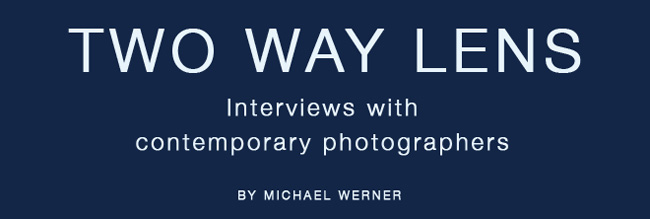What inspired you to start taking photographs, and what is the primary inspiration for you to keep working in this field?
SW
From early childhood, making art has been a central part of my life. My mother is a commercial artist and she provided me with outlets for creative expression through painting, puppetry and piano. My 3 great-aunts- a musician, a scholar/educator, & a social worker- who participated in early 20th C New York’s modern artistic and progressive scenes were a huge inspiration. Among my strongest memories from early childhood: sitting on the dunes with them in front of our easels painting the fantastic space and light of Provincetown’s desert-like dunes. This earlier time of feminism and progressive thinking of my great-aunts’ generation developed my acute awareness of the past and my sensitivity to sociocultural forces.
As a young child I was obsessed with memorizing every moment the way you’d memorize a poem-- the fleetingness of experience and its impossibility to hold. No doubt this contributed to my immediate connection with photography. It began when I fell in love with the futuristic spectacle of the New York World's Fair, the subject of my first childhood Brownie photographs shot from the Monorail high above the fairgrounds. Later, I compiled this first collection in a booklet uncannily prescient of my Mannahatta series. Exploring a sense of place and its history inspired my first 35mm photographs taken when I was a teenager working at an archeological dig in the Old City of Jerusalem near the Western Wall.
In college, I was fortunate to study with a renowned teacher and idiosyncratic artist Henry Holmes Smith. My fellow midwesterner and a favorite photographer, Ralph Eugene Meatyard, had also studied with him. Smith came from Moholy-Nagy’s New Bauhaus in Chicago and he was, for me, a living window into Modernist history. I still vividly recall discussions about his paintings and cameraless drawings and their metaphors. The Bauhausian idea of using photography not only to document but to encourage seeing in extraordinary ways struck a chord with me and threads through all my work.
My photographs explore what I see and what it sparks in me-- the way the physical phenomena of the world are experienced by the senses and imagination. Intuitive insights, states of awareness, and visual thinking - manifestations that exist only in fleeting perception are at the center of my work. In my work I attempt to recapture half-remembered memories - personal and collective- which might just be half-forgotten dreams, and to explore places and things that are visible manifestations of cultural forces of our times. The complex texture of these personal, cultural, and historical explorations and the new insights they bring keep me continually engaged in the work.
MW
In your opinion and experience, how can emerging photographers evaluate themselves as ready to start promoting their works and seek broader exposure for their photographs? What is one vital action you would recommend photographers undertake to find their audience, be included in exhibitions, and gain professional representation?
SW
Emerging photographers can gauge their readiness to start promoting their work by comparing their work with a broad range of the best contemporary and historical visual art.
Seeking broader exposure for your work is always a challenge. Emerging photographers should use all available resources to find publishing and exhibition opportunities in galleries and online. Create a professional quality website. Others on this blog have well described various facets of the currents systems of distribution.
Think about new ways for your photography to interact with other disciplines that interest you – current events, environment, technology, your community, any other field in liberal arts, etc. Cross-pollination with other disciplines strengthens the work and enriches its audiences.
Study the myriad ways photography and its new technology impacts our culture and vice versa. Cast a wide net. Find new contexts/audiences for your art beyond the gallery art world.
The collapsing economy has cracked open the systems and things are shifting. Form community with your peers -- both virtually and where you live. It is an great time to create your own opportunities with new ways you devise.
MW
How did it come about that you achieved the status of successful, professional photographer? What steps were involved in reaching your level of success?
SW
Perhaps the most important step in achieving success in the artworld is forming and cultivating the relationships that can support you - the artist - and your work. For me, these vital relationships include those with fellow artists and colleagues, curators, collectors, editors, writers, historians, publishers, friends, family, and most importantly, my husband, the artist Jim Holl.
At the beginning of my career, an important milestone was my first solo show, 'World of Wax 1983-88',in Paris in 1990 with the visionary gallerist Gilles Dusein of Galerie Urbi at Orbi alongside the Bechers, Ruff, Struth, Sugimoto, and Goldin. Another important achievement was representation by Kim Foster Gallery in New York City. I really enjoy working with Kim Foster and her support is truly invaluable in attracting the attention of collectors, curators, critics and many others to my work.
Another very significant step in achieving success as a photographer is to define what success means to you. I agree with those who have said that getting recognition as a serious and important artist is not a sprint race, but rather a lifelong marathon. I was influenced by Henry Holmes Smith who believed an artist's vision should develop out of the need to express passions and obsessions through creative experimentation while continuing to question and reevaluate, rather than out of the need to produce a singular marketable product. For me, the most interesting artists continue to grow and expand into new territories. To this day, I resist prescribed categories within photography. Instead, I highlight the subtle connections between my themes and concerns.
I cast a wide net -- from cultural fictions depicted in wax museums in the 80s, to my response to the death from AIDS in the 90s in images of botanical gardens, to bearing witness to the last days of the largest landfill on earth which subsequently received the wreckage from 9/11, witnessing Wall Street moments before the crash, always while allowing the spirit of each place and the moment to seep into my mind’s eye, my inner lens.
 Mannahatta 7.12.07 (Wall St.)
Mannahatta 7.12.07 (Wall St.)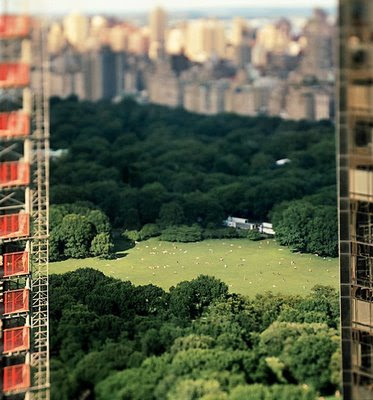 Mannahatta 7.2.07 (From Time Warner)
Mannahatta 7.2.07 (From Time Warner)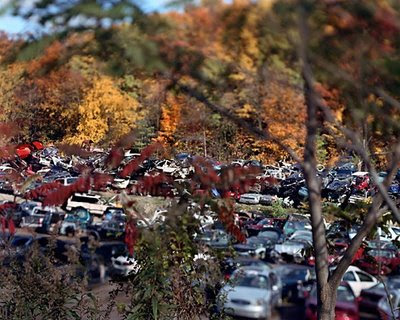 Hudson River Landscape 10.15.04 (After Cole)
Hudson River Landscape 10.15.04 (After Cole)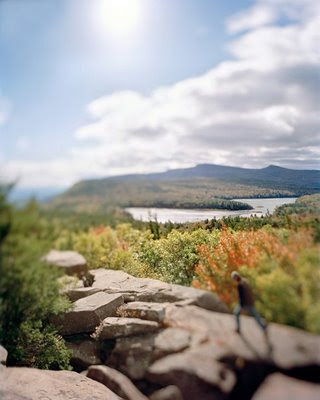 Hudson River Landscape 10.12.07 (After Cole et al)
Hudson River Landscape 10.12.07 (After Cole et al)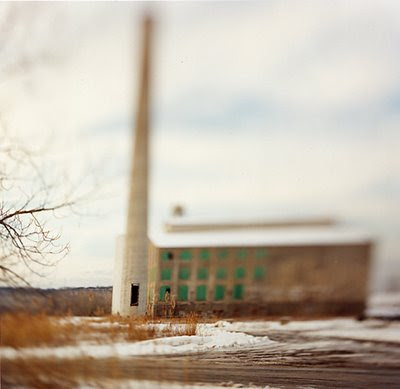 Hudson River Landscape 1.30.98 (Near Olana)
Hudson River Landscape 1.30.98 (Near Olana) Fresh Kills # 10 2000
Fresh Kills # 10 2000 The Name of the Rose (American Home) 1993
The Name of the Rose (American Home) 1993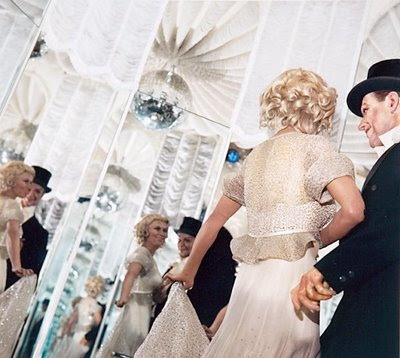 World of Wax (Strange Love 1) 1986
World of Wax (Strange Love 1) 1986 World of Wax (Emerald City 5) 1985
World of Wax (Emerald City 5) 1985© all images Susan Wides
